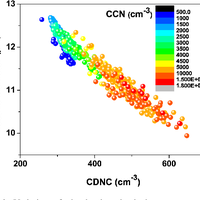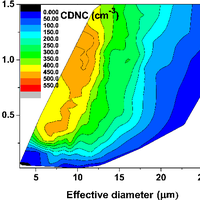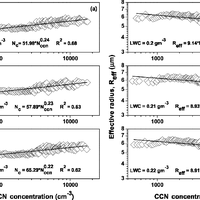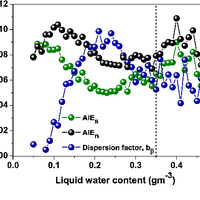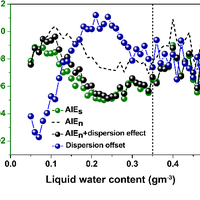Abstract
The effect of aerosols on cloud droplet number concentration and droplet effective radius is investigated from ground-based measurements over a high-altitude site where clouds pass over the surface. First aerosol indirect effect (AIE) estimates were made using (i) relative changes in cloud droplet number concentration (AIEn/and (ii) relative changes in droplet effective radius (AIEs/with relative changes in aerosol for different cloud liquid water contents (LWCs). AIE estimates from two different methods reveal that there is systematic overestimation in AIEn as compared to that of AIEs. Aerosol indirect effects (AIEn and AIEs/and dispersion effect (DE) at different LWC regimes ranging from 0.05 to 0.50 gm-3 were estimated. The analysis demonstrates that there is overestimation of AIEn as compared to AIEs, which is mainly due to DE. Aerosol effects on spectral dispersion in droplet size distribution play an important role in altering Twomey's cooling effect and thereby changes in climate. This study shows that the higher DE in the medium LWC regime offsets the AIE by 30 %.
Figures
Register to see more suggestions
Mendeley helps you to discover research relevant for your work.
Cite
CITATION STYLE
Anil Kumar, V., Pandithurai, G., Parambil Leena, P., Dani, K. K., Murugavel, P., Sonbawne, S. M., … Sukumaran Maheskumar, R. (2016). Investigation of aerosol indirect effects on monsoon clouds using ground-based measurements over a high-altitude site in Western Ghats. Atmospheric Chemistry and Physics, 16(13), 8423–8430. https://doi.org/10.5194/acp-16-8423-2016


